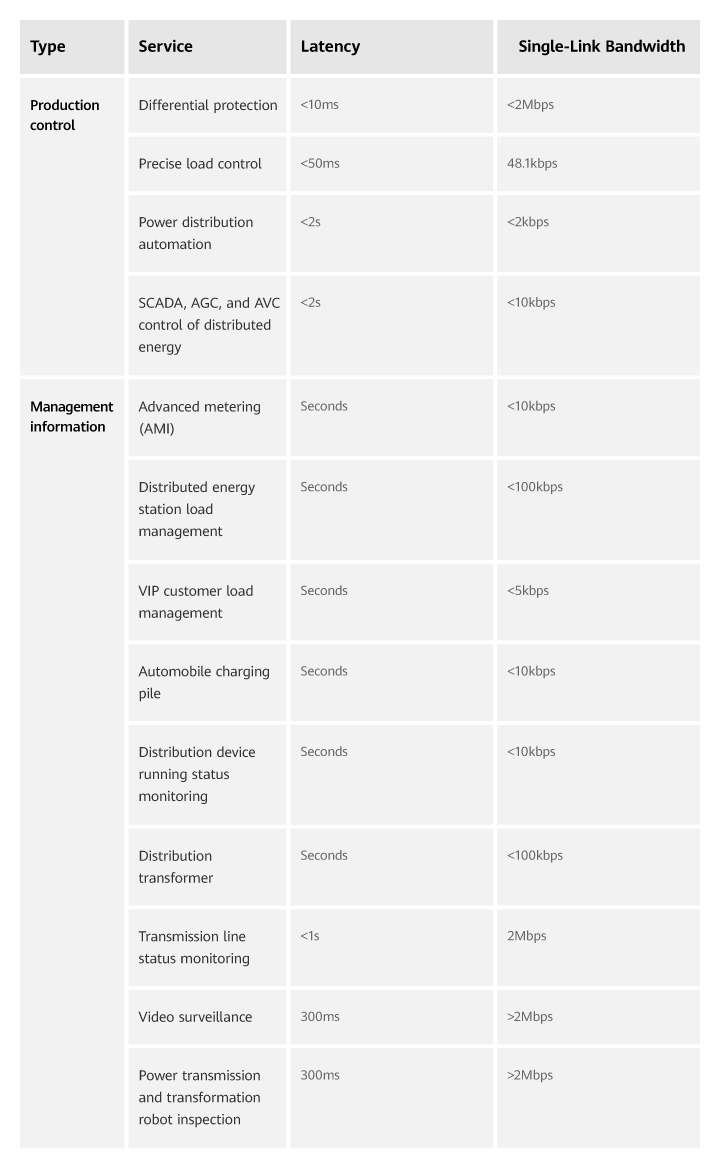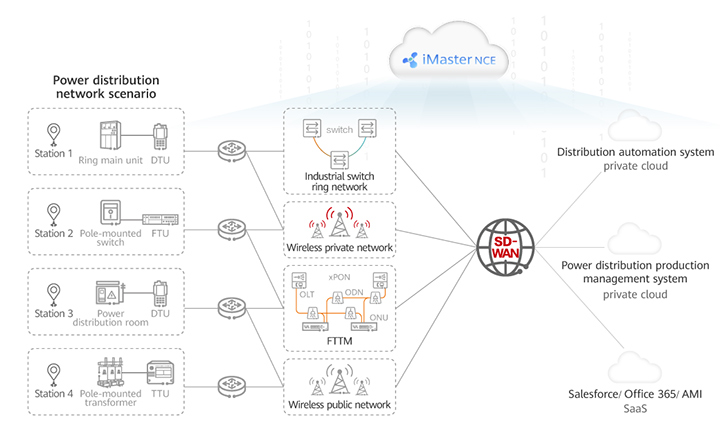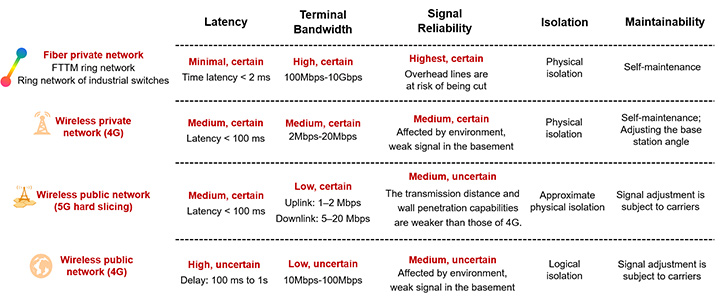This site uses cookies. By continuing to browse the site you are agreeing to our use of cookies. Read our privacy policy>![]()
This site uses cookies. By continuing to browse the site you are agreeing to our use of cookies. Read our privacy policy>![]()
Enterprise products, solutions & services
The power distribution network is the 'last mile' of power grids that connects to users, and it has a direct impact on the quality and reliability of power supply. With the construction of new power systems, medium and low voltage distribution networks are coming up against more and more obstacles when it comes to supporting open and interactive service scenarios, including system operations, production technology and marketing. With so many sites to keep track of, distribution networks have to deal with numerous faults and laborious inspections.
Wide area, numerous points, and many potential faults: Over 90% of household power outages happen due to the failure of 10 kV distribution network facilities.
Strenuous inspection: It is tricky to guarantee the safety of on-site maintenance workers or even supervise whether operations are being conducted in a standardized way. Operators are at risk of receiving an electric shock and may find themselves subject to an SF6 gas leakage.
Increasingly complicated network management: New services that rely on the power distribution network are developing constantly. As the demand for information collection mushrooms, the collection points of information are also on the rise, requiring more frequent, real-time information collection to cope with the sheer volume. In the meantime, the 'control' function is moving to terminals, with the number of control points increasing from tens of thousands to millions. The control delay must be improved from quasi-real-time to real-time, and higher-frequency controls are required. New energy sources and services including distributed energy and charging piles are being constantly added to power distribution networks, piling on the pressure.
Therefore, it is imperative to build an intelligent power distribution network to put digital power distribution to work.
Power distribution communication networks are the foundation for digitalizing power distribution. The traditional power system is mostly used in power distribution scenarios of 10 kV or lower. Due to poor communication, most power distribution networks are controlled and adjusted blindly. However, the new, real-time power system features stable, reliable, efficient and distributed performance, and enables massive access. Building a safe and reliable power distribution communication network with simplified O&M is the key to ensuring the stable running of power distribution services.

The system provides ubiquitous access to power distribution devices via fiber and mature 3G/4G/5G wireless communication technologies. Each access technology has its own advantages and disadvantages. For example, investing in and building optical networks begets a high cost, and the investment cycle can be long. However, the quality of optical network communication is unrivaled. The wireless public network can be quickly deployed with low costs, but it has poor performance in terms of coverage, security, and reliability. It does not have the low latency needed for remote controlled power distribution automation, the seamless monitoring of PV and new energy, and precise load control. Wireless private networks are limited by spectrum application. Most countries and power companies do not have suitable dedicated spectrum resources for power services. However, wireless private networks are cheaper than optical fibers. This has led some power companies to choose the RF mesh network solution. RF mesh technology supports fast and flexible network construction in the initial phases, and bandwidth and latency are controllable when the network is small. However, as the network size grows, the RF mesh network encounters increasing delays, long networking times, decreasing bandwidth, and inflexible capacity expansion. It has gradually been sidelined by power companies as a backhaul solution in automated power distribution.
The network architecture and coverage of distribution networks vary greatly in different scenarios, so selecting the right technology for the secure and stable operations of distribution communication networks is crucial for industry customers. With more than 20 years of experience in ICT and electric power fields, Huawei continues to make efforts in the optical fiber and wireless fields. Huawei offers four networking modes for the power industry: the industrial switch ring network, FTTM ring network, wireless public network, and wireless private network. In deployment, power companies can select one or more modes based on local conditions to meet the varying network construction requirements of different phases and services. All the networking modes support future evolution. When multiple links are connected at the same time, SD-WAN technology can be used to flexibly select routes. In addition, SD-WAN technology supports evolution from centralized to distributed power distribution automation, monitors the status of communication devices and SIM cards in real time, and shares communication status information with service systems through northbound interfaces.

Generally, core urban areas that require large-capacity transmission and high-speed communication like CBDs have high requirements on power supply quality and reliability. Core urban scenarios also have concentrated power facilities and massive amounts of service data. Therefore, high-bandwidth network access is required. Since fiber pipelines have already been deployed in most urban areas, optical fiber laying is easy and the cost is low. As a result, optical fibers can be used as the main communication solution in urban areas, with wireless technologies as backup. In large suburban areas or old towns with scattered network devices, wired network construction may involve toilsome cable trench excavation and high cabling costs. In this case, technologies like wireless public or private networks are preferred.
Huawei has developed a power distribution communication network solution that delivers multiple communication modes, including that of optical fiber and wireless. This solution can lay a solid communication foundation for digital and intelligent power distribution services, promote the integration of marketing and distribution services, and facilitate service extension from the medium-voltage side to the low-voltage side.
Based on optical fiber links, Huawei's power FTTM ring network solution uses the optical service units (OSUs) of the latest native hard pipe (NHP) technology to build a high-quality communication network with simplified O&M for power distribution networks. One network can carry services in multiple zones. For instance, services like distribution automation and metering are carried on one network, and services in the production system are physically isolated.
Based on optical links, Huawei's industrial switch ring network solution for the power industry uses CloudEngine S5735I-S-V2 DIN series switches. Based on the active optical network, the communication coverage and the number of communication network nodes are not restricted by optical power attenuation. This achieves a long-distance power distribution communication coverage of over 20 km. Flexible GE access and GE/10GE uplink ports are provided. The ERPS protection protocol is used, and the self-healing time of a single-point failure is less than 50 ms. The switches support an industrial-grade operating temperature range as well as surge protection, and can be installed in outdoor cabinet environments even in harsh conditions. They also support guide rail installation, saving time and economizing on space.
Huawei's electric power wireless private network solution uses the mainstream 3GPP spectrum and features low latency, wide coverage, multi-purposes networks, easy deployment and maintenance, open collaboration, and 5G-oriented evolution. The solution carries services such as distribution automation, precise load control, station environment monitoring, power quality monitoring, and video surveillance. This meets the security, reliability, latency, and access capacity requirements of intelligent power communication networks.
Huawei's electric power wireless public network solution uses NetEngine AR630/AR502H series router gateways designed for industrial scenarios. These gateways integrate multiple functions, including routing, switching, VPN, security, and wireless access. It supports 4G and 5G access, which is ideal for power distribution facilities in remote areas. In addition, in the 5G public network area, 5G slices (such as dedicated UPFs and 5GCs for electric power) can be used to construct a 5GtoB power private network on the public network.

In addition to selecting the best network construction solution for each set of circumstances, the construction of the distribution network should be done in phases. During the first phase, dual-operator radio links should be used in active/standby to quickly build networks, and IPsec should be used for security encryption and service isolation. In the second phase, more reliable optical networks or wireless private networks should be deployed in core areas and those with insufficient carrier network coverage. In addition, smooth network evolution in the future must be considered to protect primary investments and reduce repeated expenditure. For example, the evolution from 4G to 5G must be considered during wireless private network construction. The CPE connected to carriers' public networks must meet the requirements for fiber or private network access as forecasted down the line, not just for current standards.
Since the network construction cost is so high, it is recommended that customers develop value-added services to increase revenue. Customers should consider developing power bandwidth operations services and integrating distribution network and home broadband services. This would mean that one optical fiber could transmit distribution network services and FTTH services simultaneously. As a result, the AMI and xTU of the power distribution network are interconnected, reducing CAPEX. Home broadband service revenues will also help reduce investment pressure. For customers who are incapable of developing power bandwidth operations services, they can choose to cooperate with local ISPs. In addition to deploying FTTH with the help of ISPs, they can lease optical access services from ISPs. They can access SFP-based ONUs and OLT slicing services through routers to obtain optical access services. In addition, routers use IPsec and bidirectional NAT to ensure security and isolation. Capable power companies can even share optical fiber resources with ISPs to build independent networks, and select optical resources from multiple ISPs to protect links, deliver better service experiences, and cut optical fiber deployment costs.
Currently, power distribution communication network technology based on optical fibers and wireless networking is mainstream in the industry. Huawei's power distribution communication network solution, which has been successfully deployed worldwide including in China, Indonesia, Türkiye, Spain, Colombia, and Paraguay, builds upon and broadens the scope of this classic structure. Looking into future, Huawei will continue to help power companies build a reliable foundation for future-oriented, automated power distribution. In doing so, Huawei will pave a digital road to global energy transition and carbon neutrality.
Disclaimer: The views and opinions expressed in this article are those of the author and do not necessarily reflect the official policy, position, products, and technologies of Huawei Technologies Co., Ltd. If you need to learn more about the products and technologies of Huawei Technologies Co., Ltd., please visit our website at e.huawei.com or contact us.